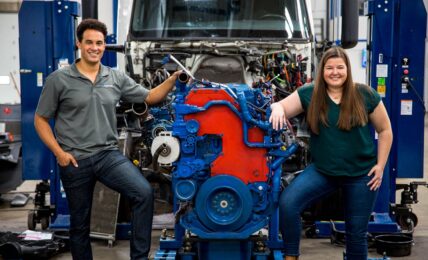United Airlines announced that it has completed the first passenger flight with the utilization of 100% sustainable aviation fuel. The flight, on a Boeing 737 MAX 8 from Chicago’s O’Hare International Airport to Washington, D.C.’s Reagan National Airport took place on December 1, used 100% SAF in the right engine, and traditional jet fuel in the left.
Air transport has come under increasing scrutiny in recent years as a significant contributor to GHG emissions, accounting for an estimated 2% of global GHG emissions. SAF is seen by market participants as one of the key tools for the industry to address its climate impact, as it generates significantly lower lifecycle carbon emissions relative to conventional jet fuel. SAF is generally produced from sustainable resources, like waste oils and agricultural residues, or even from carbon captured from the air, rather than from fossil fuels.
According to United, airlines are currently permitted to use a maximum of 50% SAF on flights. The airline secured permission to operate one engine solely on SAF. The SAF-powered engine generated an estimated 75% less CO2 emissions than conventional jet fuel-powered flight.
United stated that it partnered on the flight with Boeing, GE and Safran Engines joint venture CFM International, Marathon Petroleum subsidiary Virent, and SAF producer World Energy.
Ihssane Mounir, Senior Vice President of Sales and Marketing for The Boeing Company, said:
“Boeing is proud to support United on this historic event as we work together to make aviation more sustainable. As an industry, we are committed to addressing climate change, and sustainable aviation fuels are the most measurable solution to reduce aviation carbon emissions in the coming decades. No one entity can decarbonize aviation alone and it will require partnerships like this to ensure aviation is safe and sustainable for future generations.”
The flight aligns with United Airlines’ plans to fully reduce greenhouse gas emissions by 2050 without relying on carbon offsets and it is the latest in a series of actions by the US carrier. Other initiatives and investments by the company include the order of 15 net zero carbon aircraft from Boom Supersonic, and an investment in aeronautical company Vertical Aerospace for the development of a zero-carbon, electric vertical takeoff and landing (eVTOL) aircraft.
In April, United also launched the Eco-Skies Alliance, a program aimed at enabling corporate customers the opportunity to reduce the environmental impact of travel beyond purchasing offsets, by paying the additional cost of SAF. United announced several new participants in the program, including Microsoft, Salesforce and Zurich North America, bringing the initiative to nearly 30 companies.
United CEO Scott Kirby was one of the passengers on the flight. Kirby said:
“United continues to lead from the front when it comes to climate change action. Today’s SAF flight is not only a significant milestone for efforts to decarbonize our industry, but when combined with the surge in commitments to produce and purchase alternative fuels, we’re demonstrating the scalable and impactful way companies can join together and play a role in addressing the biggest challenge of our lifetimes.”
The post United Airlines Completes First Passenger Flight With 100% Sustainable Aviation Fuel-Powered Engine appeared first on ESG Today.



